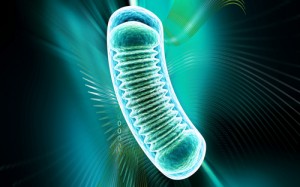
More than 25 million people suffering with Type 2 diabetes may soon have access to a new medicine developed by the Robert Wood Johnson Medical School (RWJMS). Shengkan Jin, an associate professor in the Department of Pharmacology, said that in preclinical tests niclosamide ethanol amine salt (NEN) showed remarkable success against the disease.
Jin noted that Type 2 diabetes is a chronic disease caused by a high level of glucose in the bloodstream. A person’s genetic profile plays a role in whether someone will develop the disease or not, but diabetes is also a health condition closely related to obesity and aging.
Too much fat in the liver, muscle, and adipose cells cause diabetes, Jin said. Under normal conditions, cells become stimulated by insulin into absorbing glucose, but too many lipids prevent cells from responding correctly to that stimulus. “When cells become insulin resistant, glucose that cannot be absorbed builds up in the bloodstream, leading to higher concentration,” said Jin in a recent press release.
Type 2 diabetes has reached a global epidemic level over the past few decades, as each year more and more patients are diagnosed. The dangers of this form of the disease include kidney failure, cardiovascular disease, and blindness.
To keep the disease under control, inducing low blood sugar is required and glucose intake through diet must be watched. In addition, medication to increase the release of insulin or regulate the liver’s sensitivity to the hormone is crucial. These are lifetime health commitments, since these medications must be taken several times a day.
“Patients who take them [the medications] chronically are likely to develop drug resistance, which means these drugs are no longer as effective,” said Jin in the press release. Therefore, because these medications that inevitably become ineffective aren’t a cure in and of themselves, Jin and his team focused on finding a true cure rather that just settling for controlling the disease.

The new medicine seeks to cure the disease through a process called mitochondrial uncoupling. Mitochondria are “cellular power plants,” in Jin’s words; they convert glucose and fatty acids to adenosine triphosphate, also known as ATP, a kind of energy bar that move within cells.
Through the uncoupling process, fat gets burned off and spreads heat throughout the body. When levels of cellular lipids drop back to normal levels, cells work correctly by absorbing glucose and prevent high blood sugar.
Researchers believe that liver cells should reduce glucose levels the most. Jin explained: “from experiments on mice, we saw that NEN cannot only substantially prevent the formation of type 2 diabetes in mice that are fed with high-fat diet, but also stem the deterioration of the disease, or even reverse and cure it.”
NEN is a modified version of nicliosamide, a salt form of niclosamide, and it is an FDA-approved drug, which represents an advantage. It has higher water solubility than niclosamide, making it easier to be absorbed by the body. It has a better safety profile than niclosamides as well, as mice experiments showed.
“A very little increase in body temperature can be seen in the use of our drug, but in a mild and controlled way,” Hanlin Tao, a post-doctorate researcher at the RWJMS, said. “It is because the burned fat is dissipated as heat but not continuously and excessively, since the half life of NEN is much shorter.” Fluctuations in body temperature are natural to the human body and are easily controlled; working out, for example, raises the body temperature, and sweating is the mechanism we use to reduce temperature.
Once NEN works differently than the current medicines, it will avoid cellular drug resistance, and since it treats the cause, it should be more effective and would not require constant medication. Evidence of NEN’s safety profile also suggests its ability to be commercialized. FDA approval is the next needed step.


